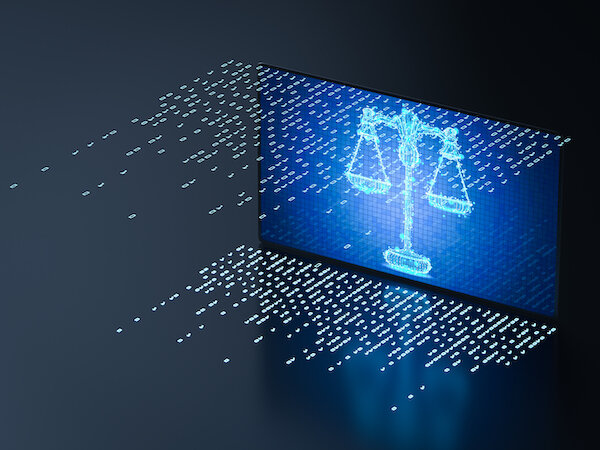In the fast-paced world of business, protecting intellectual property is just as crucial as developing a great product or service. Yet, many business owners find themselves entangled in legal confusion when it comes to safeguarding their creations. Copyrights, trademarks, and patents are three distinct tools designed to protect different types of intellectual property—but knowing which one applies to your business is essential to avoid costly mistakes.
Understanding these protections not only shields your work from infringement but also strengthens your brand, giving you a competitive edge. Let’s break down the key differences, their benefits, and how to determine which one best suits your needs.

What Is Copyright?
Copyright is the guardian of creative expression. It grants legal protection to original works of authorship, ensuring that creators have exclusive rights to their work. This includes literary pieces, music, films, artwork, software code, and even architectural designs.
When you produce an original work, copyright protection is automatic—it exists from the moment your creation is fixed in a tangible form. However, registering your copyright with the U.S. Copyright Office (or the relevant authority in your country) provides stronger legal backing should you ever need to enforce your rights in court.
What Copyright Protects:
- Books, articles, and blog posts
- Music compositions and recordings
- Photographs, paintings, and digital artwork
- Films, television scripts, and video content
- Software programs and website content
What Copyright Does Not Protect:
- Ideas, facts, or concepts
- Business names or slogans
- Methods, formulas, or inventions
Benefits of Copyright Protection:
- Grants the owner exclusive rights to reproduce, distribute, display, and adapt their work
- Prevents unauthorized copying or use
- Strengthens legal claims against infringement
- Adds value to your business by securing proprietary content
For business owners who create original content—whether it’s marketing materials, instructional videos, or unique website designs—copyright protection is an essential asset.
What Is a Trademark?
A trademark is a brand’s signature—a unique identifier that distinguishes a business’s goods or services from its competitors. Trademarks can take the form of words, logos, slogans, sounds, colors, or even product packaging (known as trade dress).
Unlike copyright, which protects creative works, a trademark ensures that consumers can easily identify and associate a brand with a particular product or service. Strong trademarks are crucial in building brand recognition and customer trust.
What Trademarks Protect:
- Business names (e.g., “Nike”)
- Logos (e.g., the Apple symbol)
- Slogans (e.g., “Just Do It”)
- Distinctive product packaging or trade dress
What Trademarks Do Not Protect:
- Generic terms or common phrases
- Functional product features
- Names or symbols that are too similar to existing trademarks
Benefits of Trademark Protection:
- Prevents brand confusion by stopping competitors from using similar names or logos
- Gives exclusive rights to use the mark in connection with specific goods or services
- Increases brand credibility and market value
- Allows for legal enforcement against counterfeiters and infringers
Trademarks are essential for businesses looking to establish a strong brand identity. A registered trademark not only prevents competitors from piggybacking on your reputation but also enhances your company’s legitimacy.
What Is a Patent?
A patent protects inventions—new, useful, and non-obvious processes, machines, or compositions of matter. Unlike copyrights and trademarks, which focus on creative and branding elements, patents grant inventors the exclusive right to make, use, sell, or license their innovation for a specific period (typically 20 years from the filing date).
Patents incentivize innovation by ensuring that inventors can profit from their groundbreaking ideas without immediate competition. However, obtaining a patent is a rigorous and costly process, requiring a detailed application and legal scrutiny.
What Patents Protect:
- New machines or devices
- Manufacturing processes
- Chemical formulas or pharmaceuticals
- Software algorithms (in some cases)
What Patents Do Not Protect:
- Abstract ideas or laws of nature
- Literary or artistic works (those fall under copyright)
- Simple modifications of existing products
Benefits of Patent Protection:
- Prevents competitors from copying or selling the same invention
- Gives the inventor exclusive rights for up to 20 years
- Enhances business valuation and attracts investors
- Creates licensing opportunities for revenue generation
For businesses focused on innovation—especially in technology, engineering, or pharmaceuticals—patent protection can be a game-changer. However, because patents require full disclosure of an invention, businesses must weigh the risks of revealing trade secrets.
How to Choose the Right Protection for Your Business
Choosing between a copyright, trademark, or patent depends on what you’re trying to protect.
| Type of Protection | Best For | Duration |
| Copyright | Creative works (writing, music, art, software) | Life of the creator + 70 years (in most cases) |
| Trademark | Brand names, logos, slogans | Indefinitely (with proper renewal) |
| Patent | Inventions, new products, manufacturing methods | 20 years (from filing date) |
Consider these key questions:
- Are you protecting an artistic or written work? → Copyright
- Are you building a recognizable brand identity? → Trademark
- Have you invented a new product or process? → Patent
For many businesses, a combination of protections is necessary. A company like Coca-Cola, for example, holds trademarks on its name and logo, copyrights on marketing materials, and patents on its bottle designs and manufacturing processes.
Common Intellectual Property Mistakes Businesses Make
- Assuming ideas are automatically protected – Copyright protects the expression of an idea, not the idea itself.
- Failing to register a trademark – Just using a name isn’t enough to claim ownership. Without registration, enforcement becomes challenging.
- Delaying patent applications – Patents operate on a “first-to-file” basis, meaning waiting too long can cost you exclusivity.
- Not enforcing intellectual property rights – If you don’t actively defend your copyrights, trademarks, or patents, others may legally challenge your claim.
- Overlooking international protection – U.S. registrations don’t automatically apply worldwide. Consider global protections if operating internationally.
Protecting Your Business’s Assets
Intellectual property protection is a strategic business move, not just a legal formality. Whether you’re an entrepreneur, artist, or tech innovator, securing your work ensures long-term business success and prevents others from profiting off your efforts.
Copyrights safeguard creativity. Trademarks solidify brand identity. Patents protect innovation. Knowing the difference—and applying the right protections—can mean the difference between thriving in the marketplace or watching competitors capitalize on your hard work.
Investing in intellectual property protection isn’t just about legal security—it’s about future-proofing your business.

